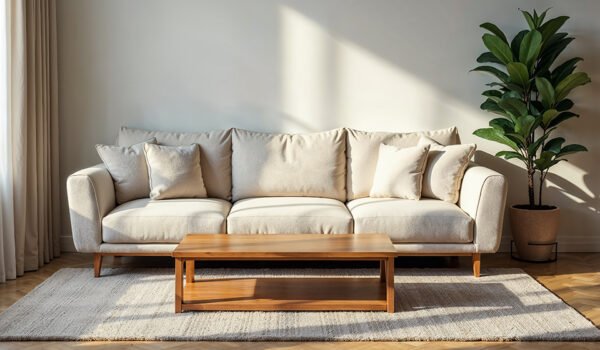Choosing the right furniture for your home can feel overwhelming. You want pieces that look good, last long, and suit your daily life. Whether you’re looking for a stylish sofa in Perth stores or planning the perfect layout for your living room, there are key factors to keep in mind before you make any purchase. Furnishing a home is not about filling space; it’s about creating comfort, utility, and harmony. As you browse furniture options, you will want to strike a balance between aesthetics, function, and cost. With thoughtful planning, you can avoid regrets and get pieces that serve you well for years. In this article, explore seven important considerations to help make your decisions easier and more confident.
Measure Your Space and Plan Layout
One of the most common mistakes is buying furniture that does not physically fit. Before you shop, measure the room where the furniture will go. Note down the length, width, and height. Also measure doorways, staircases, and hallways through which the furniture must pass.
Sketch a simple floor plan and mark where major items like a bed, sofa, or dining table will go. Leave enough walking space around furniture; roughly 60 to 80 cm (or about 2 to 3 feet) is a good rule for ease of movement. This helps you see whether a sofa or bed will crowd the room. Ensure that any bed you choose can be brought into the room without causing damage or delay.
Define Your Budget
Furniture can vary greatly in cost. Setting a clear budget helps you stay focused and avoid overspending. Consider not only the purchase price but also additional costs, such as delivery, installation, or potential repairs.
Divide your budget by room or type of furniture (for example, X dollars for the living room, Y for the bedroom). Having a limit helps narrow your options and keeps your purchases realistic. If you come across a great deal, such as stores offering a bed frame with a free mattress in Perth, make sure it fits within your budget.
Choose Durable Materials and Good Construction
A pretty piece is only useful if it lasts. Inspect how the furniture is made:
- For wooden furniture, solid wood or strong hardwood is better than particle board or weak composites.
- For joints, look for dovetail joints in drawers or reinforced corners.
- In upholstered items, check the frame (it should be sturdy); test cushion springs and check for sagging.
- The fabric or upholstery should resist wear, stains, and fading, especially in homes with children or pets.
Match Style and Cohesion
Your furniture should blend with the style of your home. Whether your taste is modern, classic, or rustic, try to keep harmony among different pieces.
Avoid matching everything too closely; that can look bland. Instead, aim for pieces that share a unifying element like colour, texture, or shape. Also, scale matters: don’t put a bulkier couch in a small room or a slim armchair in a grand space. Balanced furniture and proportion contribute to a peaceful, pleasing layout.
Consider Function and Lifestyle
Think about how you will live with each piece:
- Do you read a lot in your lounge? You may want a sofa with good back support and comfortable cushions.
- Do you host guests often? You may need furniture that can transform (an extendable dining table, a sofa bed, extra armchairs).
- Do you need storage? Choose beds with storage, ottomans, or side tables.
- Are there pets or children? Look for tough fabrics that resist stains, frames that can handle wear, and finishes that are easy to clean.
Pay Attention to Proportion and Balance
Furniture should complement the size and proportions of your room. A large sectional sofa might look perfect in a showroom, but could overwhelm a smaller living area. Similarly, tiny furniture in a large space may look out of place.
To maintain balance, consider how each item fits with others in both size and visual weight. Mixing small and large pieces thoughtfully helps create a harmonious and balanced interior. The placement of each piece should promote flow and openness while ensuring functionality.
Add a Personal Touch
Your home should reflect your personality. Small decorative details like cushions, rugs, wall art, or lighting can transform any room into a warm and welcoming space. Don’t hesitate to mix old and new; an armchair can look amazing beside a modern coffee table. Your furniture doesn’t have to be perfect; it just needs to feel like home. Personal touches make a big difference, helping you create a space that’s truly yours.
Conclusion
In summary, buying furniture is about picking pretty designs. You need to measure your space, set a budget, choose materials wisely, and think about how you live. Function, comfort, and timing all play key roles.
Whether you’re looking for sofa sets or trying to find beds, using these seven factors will help you make better choices. Take your time, test where you can, and always include hidden costs and delivery in your plan. With thoughtful decisions, your furniture will serve you well and bring joy for many years to come.


Speak Your Mind